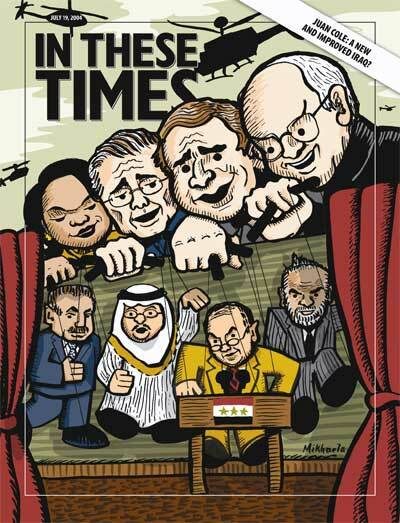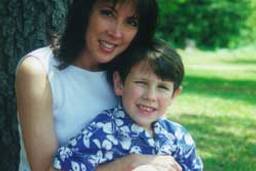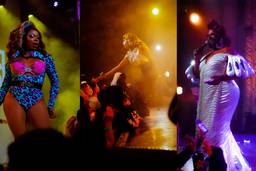
A week after the 9/11 attacks, I spoke to my nearest neighbor on our sparsely populated road in rural upstate New York. John is a city transplant with a Queens accent and the coffee-colored complexion of his Lebanese parents. He’s a plumber and a tough guy who has been tossed from several local saloons for his fisticuffs, but now fear was in his voice. “Right after the attacks, this asshole at work came up to me and said, ‘You people did it again!’” he recalled. “I looked at him and was about to tell him to go fuck off and then I thought, no, I better keep my mouth shut.”
Racist stereotyping, harassment and self-censorship all played out in that brief encounter. John thinks of himself as American, but one hate-filled man in one moment could challenge his identity and sense of security. I wondered at the time how many other such scenarios were unfolding in communities around the country in this tense, overheated climate.
Homeland, the newest work by journalist Dale Maharidge, answers that question and raises many more about the impact 9/11 had on the psyche of a nation already divided by race, class, religion and, most fundamentally, by different understandings of what it means to be American.
In the years since, publishers have cranked out hundreds- of books about 9/11. But where was the reporting on the real and perceived changes in communities far from New York and the Pentagon?
In Homeland, Maharidge breaks new ground in the genre of 9/11 journalism by heading into heartland America, his old stomping grounds from three earlier books with photographer Michael Williamson.
For two years, Maharidge traveled the country, from Chicago to West Virginia to Maine, practicing what he calls “Star Trek journalism” — going where no journalists have gone before. He reports the stories that the news media ignored while Williamson documents the story with photos that are poignant and frightening evidence of America’s pulsing heart of darkness.
On September 11, 2002, while the herd produced predictable flag-waving and maudlin reportage, Maharidge went to a Chicago suburb where ethnic whites staged a violent rally in an Arab neighborhood. “It seemed every journalist and writer and producer in America was working on a 9/11 anniversary story that day,” he writes. “I was no different. But where I was going there was no national press, no bands, no politicians working a crowd, no emotional tales of heroism or loss.”
The tales Maharidge relates expose the synergy between economics and racism in Rust Belt communities, whose residents are the victims of post-industrial collapse and what he describes as a “30-year war against the working class.” Maharidge aims to “draw back the curtain” on the anger of white working-class people like Nancy and Jim, a mother and son from Oak Lawn, Illinois. Behind their flag-waving and anti-Arab pronouncements are real financial fears. Jim, 35, had two heart attacks and has $200,000 in medical bills he can’t pay because he is uninsured and hasn’t held a job in two years. Nancy, 56, needs a knee operation but her HMO won’t cover it. They are riled up, believing Arab immigrants get “the best medical care” free.
September 11 didn’t transform the United States from a nation of tolerant, freedom-loving citizens into one seething with the brand of racial intolerance Jim and Nancy display. It uncorked the genie. “People had hate, they had anger,” Maharidge says in an interview. “But it was directionless. After 9/11, it had direction. George Bush was channeling the anger.” To what extent are economics and what Maharidge documents as a deepening depression in most of the country responsible for the currents of racism and xenophobia? That is an important question.
As Homeland came out, Harvard’s Samuel P. Huntington arrived in bookstores with Who Are We? The Challenges to America’s National Identity, the intellectual equivalent of the nativism expressed by Jim and Nancy. Huntington posits that Americans faced with a growing immigrant population need to protect Anglo-Protestantism as a shared culture. He writes that during economic downturns “white nativist movements are a possible and plausible response to these trends.” But if Huntington sees nativism as “plausible” and hence defensible because of his own identification with its basic tenets, Maharidge sees nativism and racism as fundamentally anti-democratic, the curdled byproducts of a failed economic system and the betrayal of working-class people whatever their color or creed.
Maharidge finds historical precedents in post-World War I Weimar Germany for what he found as he traveled post-9/11 America “harvesting” stories of reaction and rage. Germany’s political and economic fall from power and the accompanying nationalism fed Hitler’s rise to power. Maharidge sees in today’s America the awful possibilities of a similar angry nationalism. “Many Americans long for a nation- that is powerful — at least in economic terms. Americans may not be lugging bushel baskets of money to buy bread, but they are trying to live on Wal-Mart wages paying Silicon Valley-level prices for mortgages and rents in the hinterlands. These Americans want back the America they remember.” Conservative talk radio, Maharidge writes, is “a virtual beer hall” where right-wing thugs like Rush Limbaugh and Bill O’Reilly whip up their listeners with inflammatory racist and anti-immigrant — not to mention homophobic and sexist — blather.
But all is not darkness in heartland America. Maharidge also tells stories of courage and conviction. Chief among them is how 15-year-old Katie Sierra faced down the thugs in Sissonville, West Virgina, “a community that relished being redneck” and waved the Confederate flag as “a talismanic symbol that guards the town and announces: no minorities. No gays. No pinkos. No ‘other’ of any kind.” In fall 2001, Sierra became an outcast in her school and the town of Sissonville for opposing the bombing of Afghanistan and trying to organize an anarchist club whose manifesto opposed hate or violence. Maharidge followed Sierra as she went to court to challenge school authorities and, indeed, the very definition of civil liberties and democracy in one small town. For Sissonville’s residents, being patriotic Americans means conformity and obeisance to authority. To Katie Sierra and her civil liberties attorneys, patriotism includes and encourages dissent and individual expressions of unpopular views.
Who will get to define patriotism and democracy in post-9/11 America? Will it be, as Maharidge describes them, the “thousand mini-Ashcrofts scattered around the country — 0n school boards, in newspaper publishers’ offices, among some college administrators, on local police departments” — or will it be the Katie Sierras? Homeland poses this fundamental question. It is one that all of us who are committed to social and economic justice must ultimately answer.







